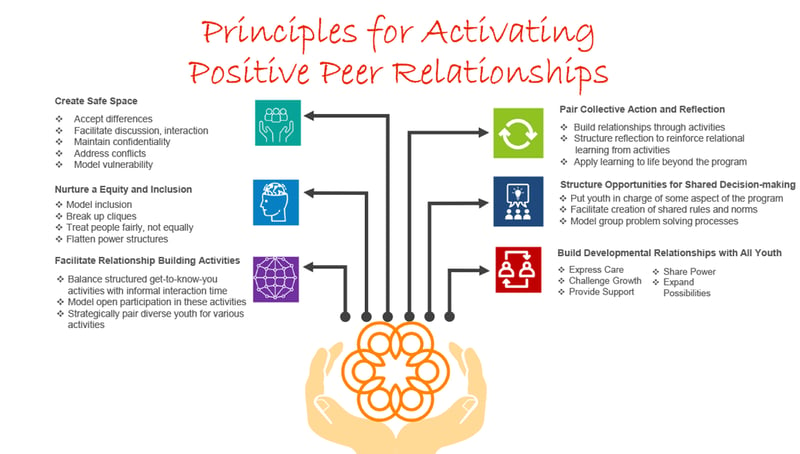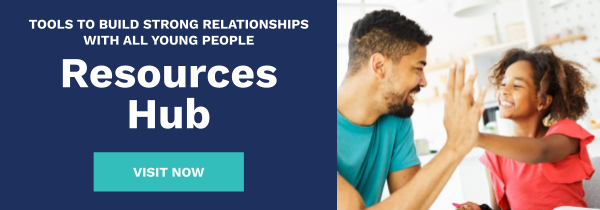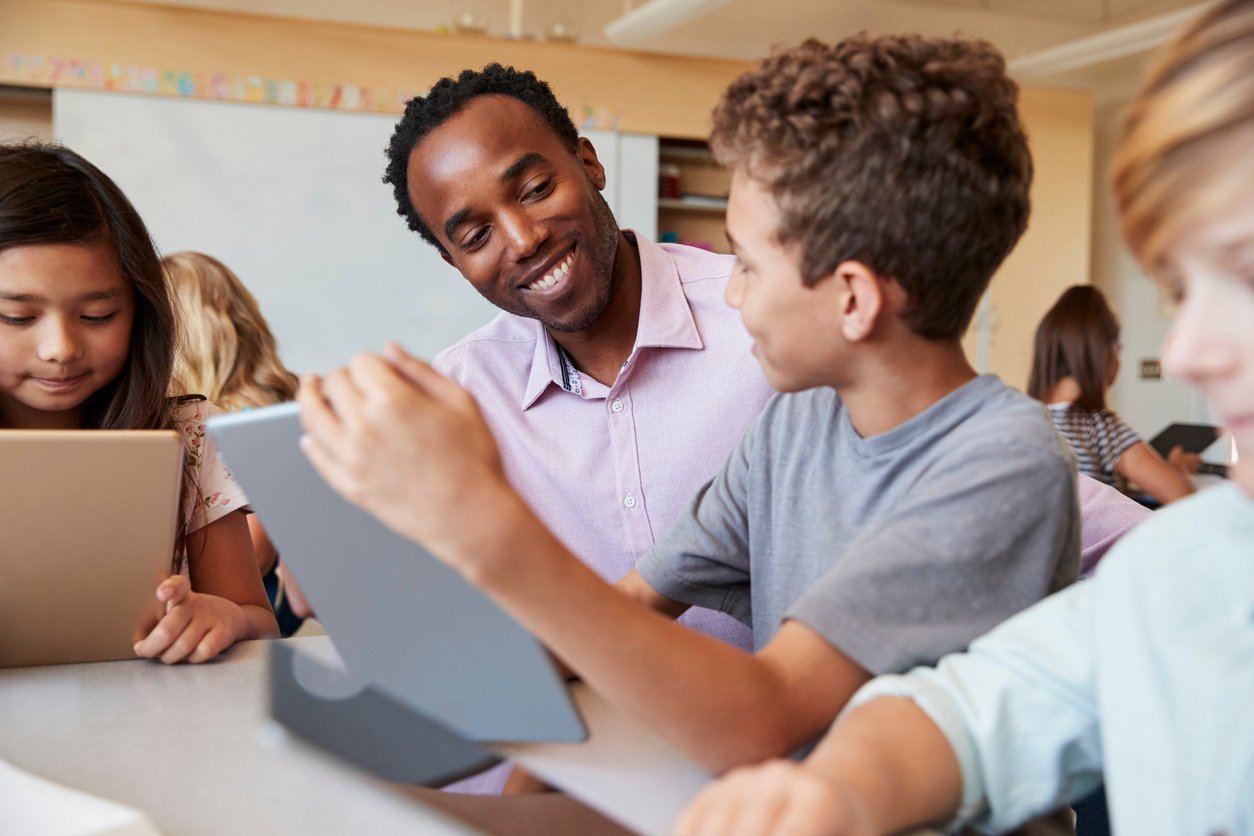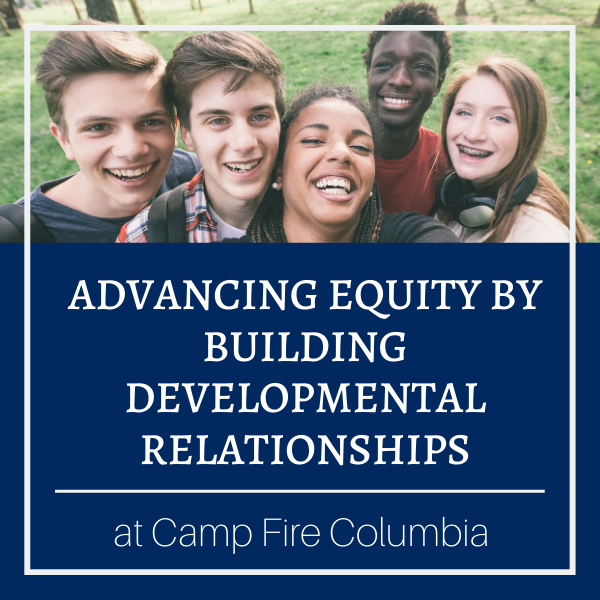Blog
Activating the Power of Peer Relationships in the COVID Era
When times are tough, we lean on our friends.
Before the COVID-19 pandemic, we already knew how important it was for young people to develop supportive, positive peer relationships.
Decades of research have shown us that friendships and positive peer relationships bolster social-emotional well-being, academic progress, and career success for young people. These relationships also have a significant impact on students’ academic and career decisions.
For adults working with youth, learning to activate and nurture positive peer relationships is a rewarding strategy that can help young people navigate the stress, loss, and trauma they are experiencing.
As schools and youth programs cautiously return to in-person instruction and programming, there is an opportunity to focus on centering relationship building and creating trauma-informed spaces that can help young people overcome the challenges of the pandemic to thrive together.
The Power of Peer Relationships
A recent Search Institute study on peer relationships confirmed decades of previous scholarship showing how critical peer relationships are to healthy development. That study showed:
-
Youth reporting strong peer friendships were four times more likely than other participants to report high levels of social competence.
-
Youth reporting strong peer friendships were three times more likely to report high levels of communication skills, belonging, leadership, self-awareness, and self-efficacy.
-
Youth with strong peer friendships were five times more likely to say they would intervene if a friend needed help, and four times more likely to report a sense of purpose.
Previous studies had already determined that positive peer relationships reduced stress, increased academic motivation and learning, reduced risky behaviors, and facilitated positive identity development.
Now that we understand the power of peer relationships, how do school and out-of-school program staff and leaders create a fertile ground for these relationships to grow?

Activating Positive Peer Relationships
To discover effective practices for promoting positive peer relationships, Search Institute took a look at five exemplary youth programs in the United States. Through surveys, focus groups, interviews, and observations, we learned a lot about what these programs are doing to support positive peer relationship development.
The following are what we call the “effectiveness principles” that can be used as guidelines and adapted and lived out in ways that make sense to your settings.
1. Create Safe Spaces
Exemplary youth programs created environments where participants felt physically and emotionally safe. Youth needed to experience acceptance, knowing that they wouldn’t be judged or disrespected.
Effective group leaders used facilitation skills to encourage young people to communicate openly but also stepped in to steer conversations in a positive direction and to manage conflicts before they escalated.
You can say whatever in this [program] and nothing will be said out of it. And it makes you feel more comfortable with what’s being heard and what’s being said.
— Youth Program Participant
Young people reported that they appreciated options to skip activities and sharing and to not be shamed for not knowing, sharing, or doing something.
When youth felt safe and supported enough to be vulnerable, they needed less structure and guidance from group leaders. That allowed them to take more risks, and their relational skills grew.
2. Nurture a Community Mindset
In addition to creating safe spaces, staff and program leaders worked to create inclusive communities, making everyone feel welcome. They made sure to draw out people who weren’t being included, mixing up groups and treating everyone fairly. They took time to learn the strengths and needs of participants and flattened power structures with strategies such as standing and seating people in a circle, instead of rows, and staying on the same level as young people.
When you’re doing an activity, you really need to take into account what everybody can do and also what they can’t, because you can’t have someone who can only do one push-up try to pull themselves up over a wall. You’ve gotta incorporate everyone and be considerate of what they can actually do physically to be most efficient.
—Youth Program Leader
3. Facilitate Relationship-Building Activities
When group leaders balanced unstructured time with intentional relationship-building activities, youth became more comfortable with each other. The most effective programs began with more structured activities, and over time they loosened up and allowed young people to lead the way to deepen their relationships. Young people and group leaders appreciated activities that helped build empathy for each other’s struggles. And leaders adapted their plans after reading the group and discovering which activities worked for their situation. In addition to games and activities designed for relationship building, leaders also tried to mix groups and rotate jobs so young people could learn from each other’s experiences and viewpoints.
Once I got them to open up and feel that they’re not too cool to play these games, they enjoyed it. I used the ‘embarrass myself’ tactic; I’m older than you guys and I’m willing to do it.
—Youth Program Leader
4. Pair Collective Action and Reflection
Many of these youth programs involved activities: recreation, community service, nature conservation, or social justice advocacy. A lot of relationship-building happened within those activities. When group leaders balanced shared action and reflection, relationships flourished. The groups recognized and built upon a shared foundation of working as a team to accomplish something meaningful. And they learned to support each other and collaborate to solve problems. They used activities like “Roses and Thorns,” allowing members of the group to share what went well (rose), what was a challenge (thorn), and what they were looking forward to (rosebud).
The first thing you do is you bring your chair and we sit around a rug, and you’re given a prompt. We have a talking piece. Ours happens to be a pink lamb that is passed around. And you say your rose [what worked well] and your thorn [what was difficult] . . . We have a rule that’s ‘one mic,’ so you can’t speak when someone else is speaking, that’s not respectful . . . When you go around, you don’t say too much, but when you’re asked a question, that’s when you have free reign to go into detail.
—Youth Program Leader
Group leaders also paid attention to the spaces between activities, such as cooking, putting equipment away, or stretching, and found rich opportunities for relationship building.
5. Structure Opportunities for Shared Leadership and Decision-Making
The most successful leaders shared decision-making power and gave young people ample opportunities to lead and solve problems together. Youth created norms and rules for groups and planned activities, including parties, camping trips, social justice advocacy, and service projects. Young people learned to compromise, collaborate, and lead each other while building better relationships. When group leaders felt the need to make decisions for the group, they were open about it, rather than sneaking off to have secret conversations.
I think it definitely does help with the group dynamic that we all have a voice in it and the decisions being made. . . it’s not a fake thing where they ask for your opinion but they know what’s gonna happen anyway, which has been the case in other things I’ve done.
— Youth Program Participant
6. Build Developmental Relationships
Search Institute’s developmental relationship framework provides a series of guiding principles of elements to build and strengthen relationships that have been proven to help young people discover who they are, learn, grow, and thrive. Those five elements are Express Care, Challenge Growth, Provide Support, Share Power, and Expand Possibilities. There are activities and approaches to focus on each of these crucial elements of developmental relationships. When group leaders were intentional about building relationships with young people, their efforts paid off.
Helping Young People Rebound
As educators and leaders look for ways to support youth in navigating the stress and trauma of the pandemic, creating safe and healthy spaces for peer relationships to thrive contributes to the health and well-being of young people. It also provides a firm foundation for building and promoting the social and emotional skills critical for success in school, work, and life.





